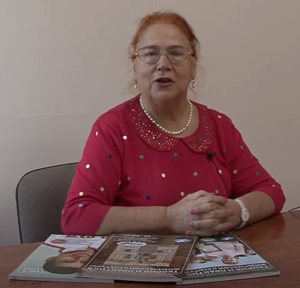Relationship of morphofunctional indicators with indicators of general physical training of Mongolian wrestlers according to the results of multiple regression analysis
ˑ:
Doctoral student Shagdar Bat-Erdene1, 2
Dr. Biol., Professor Gundegmaa Lkhagvasuren2
1University of Medical Science, Ulaanbaatar, Mongolia
2Mongolian National Institute of Physical Culture of Mongolia (MNIFC), Ulaanbaatar, Mongolia
Objective of the study was to identify the relationship between morphofunctional indicators and indicators of general physical fitness of Mongolian athletes.
Methods and structure of the study. The work analyzes the most important characteristics and indicators of the body condition (anthropometric data, body composition data, functional parameters) of highly qualified athletes, providing significant connections with physical fitness tests. To achieve this goal, 181 highly qualified athletes, mainly involved in martial arts, were examined.
Results and conclusions. Based on the results of multiple regression analysis, morphofunctional models of the motor qualities of Mongolian highly qualified athletes were built, which are based on morphological characteristics, body composition indicators obtained using the bioimpedansometry method, and functional characteristics that can be used in sports selection, at the initial stage of preparation and at the stage of individualization sportsmanship in a long-term training process.
Keywords: functional indicators, athletes, physical training.
References
- Gundegmaa L. Morfofunktsionalnyye osobennosti studencheskoy molodezhi Mongolii v zavisimosti ot geneticheskikh i sredovykh faktorov [Morphofunctional characteristics of student youth in Mongolia depending on genetic and environmental factors]. PhD diss. abstract. Мoscow, 2009. 28 p.
- Gundegmaa L. Formirovaniye morfofunktsionalnykh osobennostey mongolskikh sportsmenov: vozrastnyye, ekologicheskiye i geneticheskiye faktory [Formation of morphofunctional characteristics of Mongolian athletes: age, environmental and genetic factors]. Doct. diss. abstract (Biol.). Мoscow, 2019. 46 p.
- Zatsiorskiy V.M. Fizicheskiye kachestva sportsmena. Osnovy teorii i metodiki fizvospitaniya [hysical qualities of an athlete. Fundamentals of the theory and methodology of physical education]. Moscow: Fizkultura i sport publ., 1970. 200 p.
- Landa B.Kh. Metodika otsenki fizicheskogo razvitiya i fizicheskoy podgotovlennosti kak chast sistemy otsenki kachestva obrazovaniya [Methodology for assessing physical development and physical fitness as part of the system for assessing the quality of education]. Vestnik sportivnoy nauki. 2010. No. 5. pp. 54-57.
- Gundegmaa L. Sportyn dasgalzhuulaltyn onolyn undes [Theory of sports coaching]. Ulaanbaatar, 2003. 658 p.
- Gundegmaa L., Altantsetseg L. Osobennosti skorostno-silovykh kachestv u mongolskikh detey [Features of speed-strength qualities in Mongolian children]. Pedagogika, publ. 1990. Issue. 1. pp. 41-47.
- Novikov A.A., Olenik A.G., Kargin N.N. Modelirovaniye v sportivnoy borbe [Modeling in wrestling]. Sportivnaya borba, publ.. Moscow: FiS publ., 1981. pp. 62-65.
- Matveev L.P. Osnovy sportivnoy trenirovki [Fundamentals of sports training]. Moscow: Fizkultura i sport publ, 1977. 280 p.
- Platonov V.N. Upravleniye trenirovochnym protsessom vysokokvalifitsirovannykh sportsmenov, spetsializiruyushchikhsya v tsiklicheskikh vidakh sporta [Management of the training process of highly qualified athletes specializing in cyclic sports]. Osnovy upravleniya trenirovochnym protsessom sportsmenov. Kiyev: GIFK publ., 1982. pp. 5-26.



